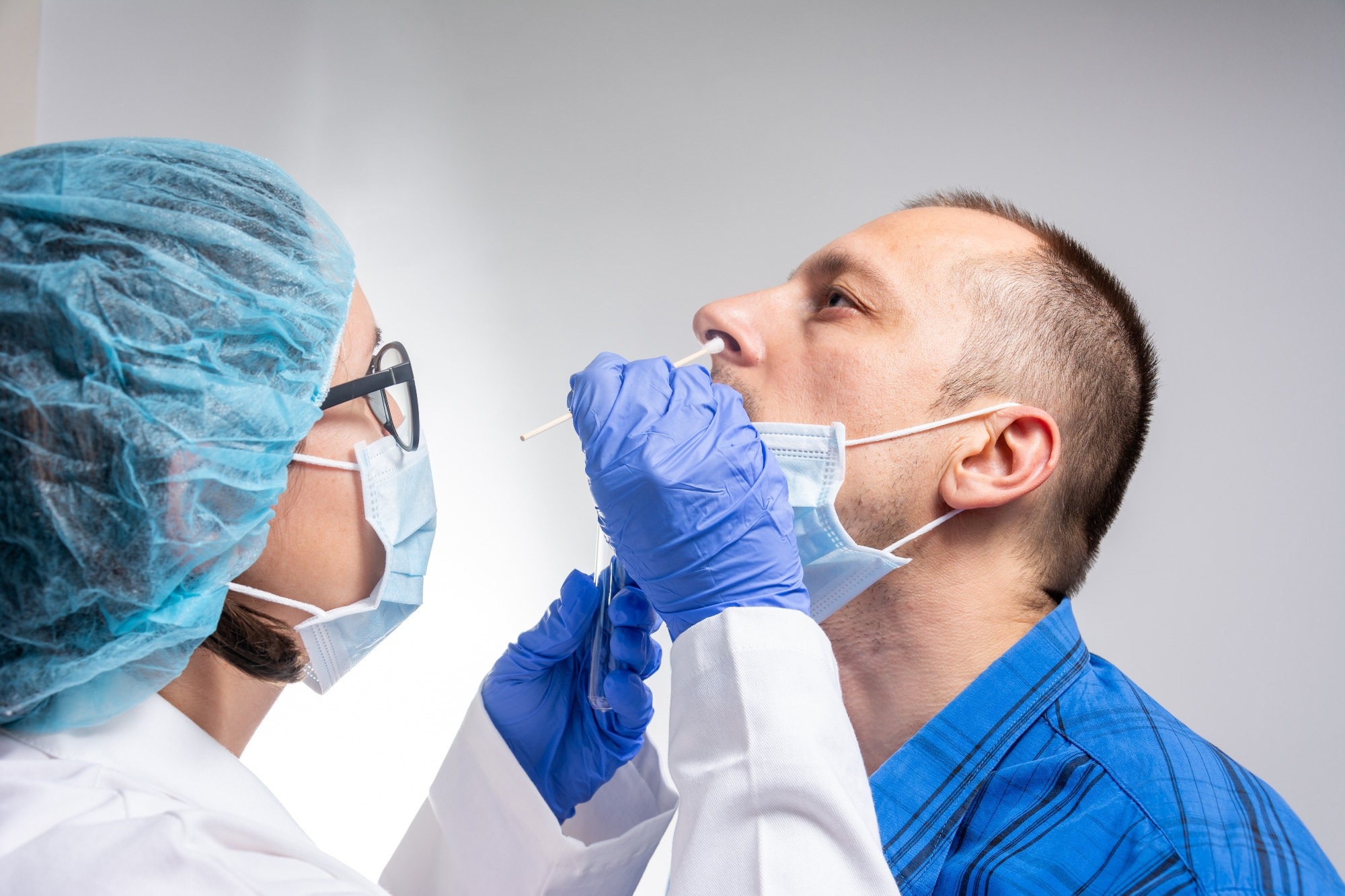A recent PLOS Pathogens study analyzed the role played by host mucins and mucin glycans with regard to SARS-CoV-2 entry into the airway epithelial cells.
 Study: Glycosylated extracellular mucin domains protect against SARS-CoV-2 infection at the respiratory surface. Image Credit: Nenad Cavoski/Shutterstock.com
Study: Glycosylated extracellular mucin domains protect against SARS-CoV-2 infection at the respiratory surface. Image Credit: Nenad Cavoski/Shutterstock.com
Background
The severe acute respiratory syndrome coronavirus 2 (SARS-CoV-2) virus caused the devastating coronavirus disease 2019 (COVID-19) pandemic. Individuals experience a wide range of symptoms from mild respiratory illness to severe respiratory distress syndrome.
A deeper knowledge of host factors influencing viral entry is important to elucidate host-SARS-CoV-2 interactions and identify novel therapeutic targets.
What are mucins?
Mucins are a family of high molecular weight O-glycosylated proteins. They are crucial in protecting the respiratory tract against viral and bacterial infections. MUC5AC and MUC5B are gel-forming mucins that clear pathogens by mucociliary clearance.
Meanwhile, MUC1, MUC4, and MUC16 are transmembrane (TM) mucins that can facilitate or restrict microbial invasion at the apical surface of the epithelium. StcE, which is the mucin-selective protease, cleaves the glycosylated extracellular portion of the mucins without disturbing the underlying domains.
About this study
SARS-CoV-2 is a single-stranded, enveloped, and positive-sense RNA virus that belongs to the β-coronavirus genus, within the Coronaviridae family. To gain entry into the host, it utilizes the angiotensin-converting enzyme 2 (ACE2) as an entry receptor. Additionally, proteolytic cleavage of the spike protein, mediated by the transmembrane serine protease 2 (TMPRSS2), is required for viral entry.
In the respiratory tract, human coronaviruses depend on sialic acids linked to glycoproteins or gangliosides as the main attachment sites. Glycosylated mucins might provide viral binding sites by being decorated with sialic acids. They could also restrict access to the ACE2 receptor.
This study analyzed the role played by transmembrane mucins and their terminal glycans in the SARS-CoV-2 entry process in primary airway cultures and a respiratory cell line.
Key findings
Human lung epithelial Calu-3 cells were seen to express high levels of MUC1. TM mucins MUC16 and MUC4 and secreted mucin MUC5AC were almost undetectable.
MUC1 and MUC16 were expressed and some secreted MUC5AC was detected in organoid-derived airway cultures. Viral infection was enhanced with enzymatic removal of extracellular mucin domains, but not individuals' fucose sugars or sialic acid.
The current study demonstrated for the first time that ACE2 and MUC1 colocalize on the apical surface of Calu-3 cells. In air-liquid differentiated airway cultures, it was observed that MUC16 and MUC1 have distinct expression patterns in different cells. Based on these observations, a model was proposed in which glycosylated extracellular mucin domains form a protective layer on the ACE2 receptor. This would prevent access of the virus to the receptor.
The study found that during SARS-CoV-2 infection, endogenously expressed TM mucins MUC1 and MUC16 played a protective role. Overexpression of TM mucins reduced SARS-CoV-2 infection, in comparison to cells with a non-targeting guide (NTG). Also, enzymatic removal of overexpressed MUC4 was seen to result in increased viral entry.
However, given the current state of research, it is difficult to conclude whether some specific mucins, such as MUC1, MUC4, or MUC16, or TM mucins in general are protective or contribute to severe disease, within the complexity of the body, during different stages of pathogenesis.
Documenting the function of specific mucins during in vivo infections will be important for future research.
No significant increase in SARS-CoV-2 infection was observed in live virus experiments after neuraminidase or fucosidase treatment. Consecutive treatment with StcE and heparinase or neuraminidase did not result in a difference in viral entry.
On negatively charged surfaces, differences in viral dependence could be explained by the accessibility of the receptor for the viral spike protein and the levels of ACE2 and TMPRSS2 protease expression.
It was concluded that during SARS-CoV-2 infection of human respiratory Calu-3 cells the MUC1 extracellular domain prevents the binding of the virus to the underlying receptor.
Conclusion
In sum, this study sheds light on the role of glycosylated extracellular mucin domains as a host defense mechanism during SARS-CoV-2 entry.
Excess accumulation and overproduction of gel-forming mucins in the lungs of SARS-CoV-2-infected patients could lead to life-threatening situations. Researchers are currently focussing on a therapeutic strategy based on reducing mucin expression overall.
Future research should be conducted on characterizing the role and expression of specific soluble and TM mucins in different cell types, at various stages of SARS-CoV-2 infection.
An approach that boosts expression of protective TM mucins, while simultaneously reducing secretion of soluble mucins could be the way forward in preventing SARS-CoV-2 infection or other respiratory pathogens and improving disease outcomes.